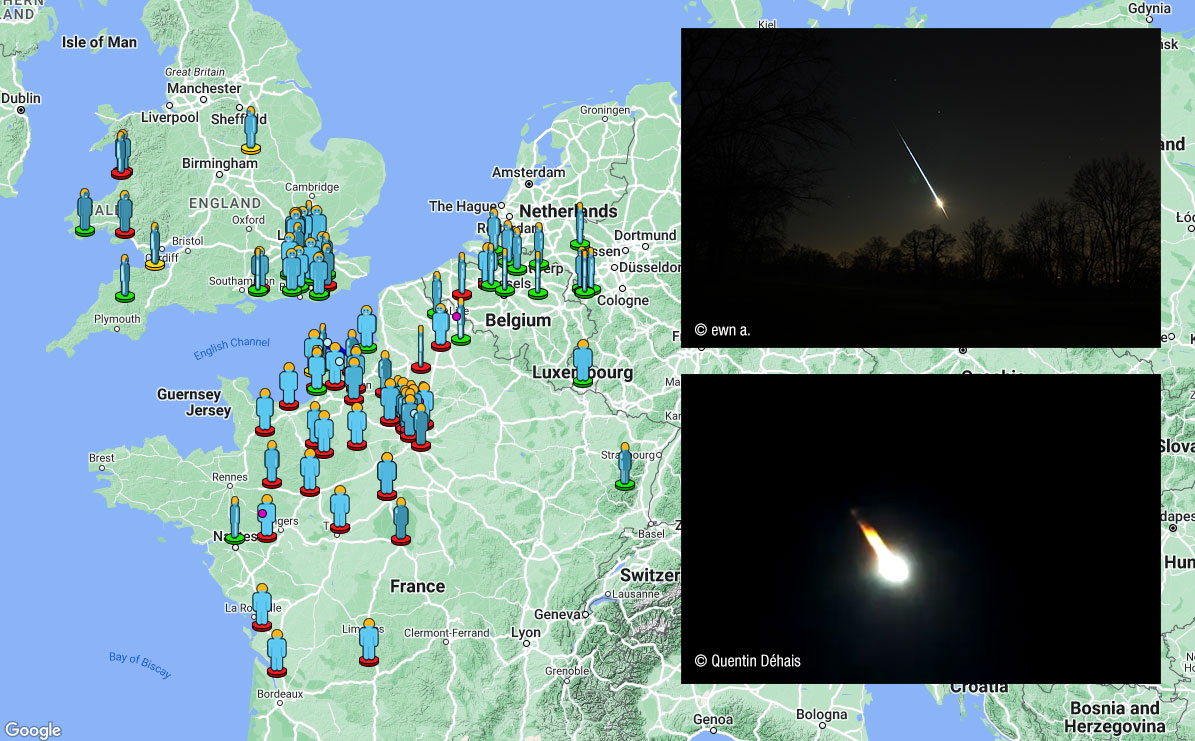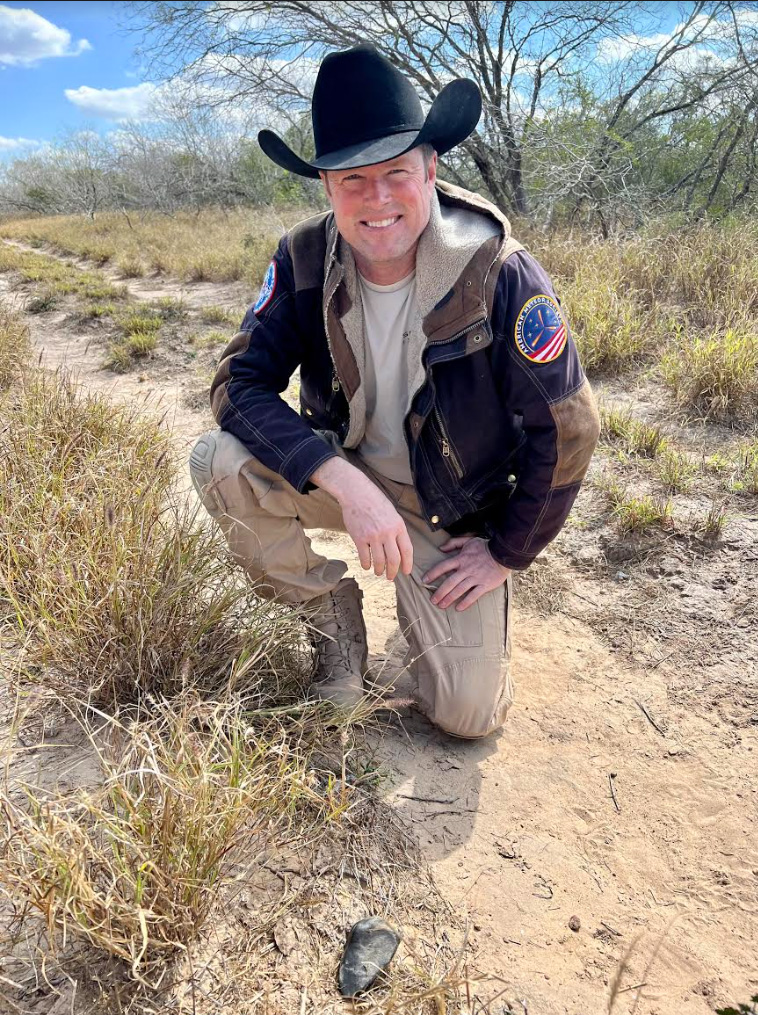A miraculous series of meteorite falls has occurred 10 years to the day of the famous Chelyabinsk Meteor of February 15th, 2013. Last week we witnessed three different meteorite falls and three meteorite recoveries over three days. This cluster of events can currently be explained only as random chance or good fortune. However, with further study of both the material composition of the meteorites and also their orbital information some link between the events may or may not be proven. One can only speculate about these things now, but we hope over time continued scientific study leads to a better understanding of these events and February fireballs.
Feb 13: France
Asteroid 2023 CX1 (a meter-sized asteroid or meteoroid) entered Earth’s atmosphere on 13 February 2023 02:59 UTC and disintegrated as a fireball over the coast of Normandy, France along the English Channel. It was discovered less than seven hours before impact by Hungarian astronomer Krisztián Sárneczky, at Konkoly Observatory’s Piszkéstető Station in Mátra Mountains, Hungary. It’s only the 7th asteroid ever discovered prior its atmospheric entry. The AMS and its international partners IMO, Vigie-Ciel and UKMON received 83 reports about this event including 17 videos.

Two days later, a team of professional and enthusiastic volunteers found the first ~100g meteorite piece of what would lead to multiple recoveries. Up to today, more than 10 meteorites fragment shave been recovered, and research teams are going on looking for pieces of this 1-m diameter asteroid.
Feb 14: Italy
Few hours later, another Fireball was observed in the early evening of February 14 over Southern Italy. The AMS and its international partners IMO and PRISMA received 33 reports about this event from Italy, Slovakia, Croatia and Montegnero. It took only few days for the Italian PRISMA team to recover the first pieces of what is know now as the “Valentines Day” meteorite.

Feb 15: Texas
Last but not least, several Rio Grande Valley (Texas) area residents heard a loud boom and felt the ground shake underneath them on February 15th, 5:23PM CST. NASA officials have now confirmed a 1,000-pound meteor as responsible for the disruption. It was estimated to be two feet in diameter and traveling at 27,000 miles per hour releasing energy equivalent to 8 tons of TNT. The meteoroid broke into fragments at an altitude of 21 miles and its entry was captured by NASA’s GOES-16 satellite.
Falling debris from the meteorite was recorded on NOAA’s NEXRAD doppler weather radar and this led meteorite hunters to the general location of the fall. On February 18th, first meteorite fragment linked to this event was recovered near El Sauz TX on private property by planetary science researcher, Robert Ward of Prescott Arizona.

Robert Ward of Prescott Arizona with First Meteorite Found in Texas on Feb 18th, 2023 Credit: Robert Ward – American Meteor Society

 American Meteor Society
American Meteor Society
Outstanding good information.
i believe i may have another the 2nd it looks very similar to this